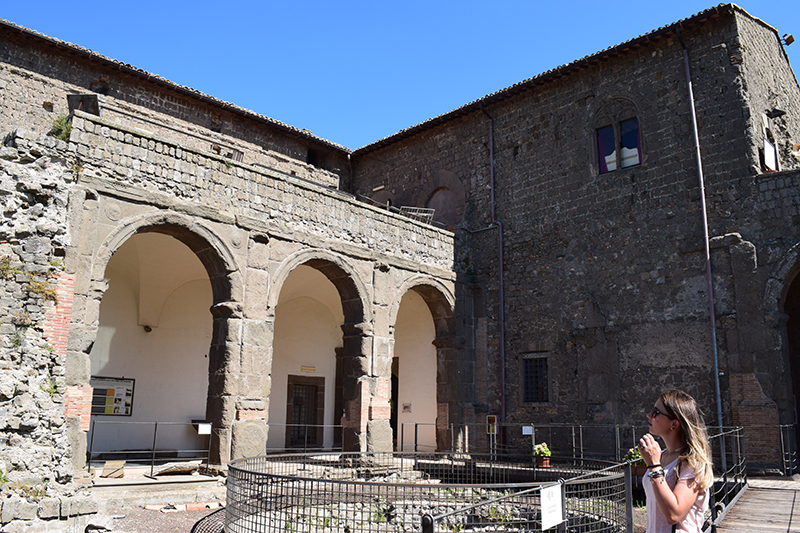The Rocca Papale stands on top of the mount of the Volsini Mountains in a position that has always been considered strategic for the possibility of dominating a large surrounding area.
In fact, even if the maximum height of Montefiascone is only about 600 m above sea level, its view is 360 degrees over the entire flat area from Lazio, Umbria, Tuscany to the Marche.
Probably the first Etruscan populations had built the fortress, as it appears from a small stretch of wall, but the real development occurred in the Middle Ages. In fact, after the fall of the Roman empire, the populations sought refuge in fortresses on the heights.
Its development took place in particular with Pope Innocent III, the Pope who met St. Francis and recognized his order.
Because of its particular strategic position, the castle was chosen by the popes as the seat of the Rector of the Patrimony of St. Peter and, subsequently, intended for their temporary residence. Urban V indeed chose Montefiascone as his summer residence from 1367 to 1370.
The fortress then played an important role during the military restructuring of Cardinal Egidio Albornoz who had entrusted to the great military architect Antonio da Sangallo the elder the restructuring of the Vatican fortresses after the introduction of the use of cannons and gunpowder against the fortifications of the towns.
The renovation work was then continued by Antonio da Sangallo the Younger and the fortress now houses a museum dedicated to the Sangallo.
The slow abandonment of Montefiascone began with Pope Paolo III Farnese who wanted to create a duchy for his son Pier Luigi and set up his administrative centre in Montefiascone. The population held a referendum and opposed this choice and hence the pontiff moved the Rectorate and the cannons.
During the following centuries the fortress was slowly stripped of all its furnishings and ornaments and began a decline that was recently completed with the restructuring of what was left to transform its spaces into a socio-cultural centre of the town and the museum for the whole complex.







Follow us